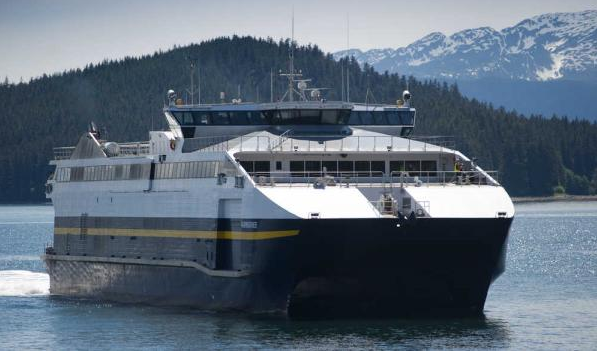The following editorial first appeared in the Ketchikan Daily News:
Alaska’s ferry system is sailing in stormy seas these days, buffeted by a growing tempest of unfavorable conditions with no safe harbor yet in sight.
The latest rogue wave to strike was a damaged propeller on the ferry Columbia, which required the Alaska Marine Highway System to cancel northbound service next weekend on the major route from Bellingham, Washington, to Alaska. Folks who wanted to sail to Ketchikan and points north in Alaska next Saturday now have to wait until Oct. 1.
Some passengers can and will wait another week. Others can’t, or won’t. Either way, the perceived reliability of Alaska’s state ferry transportation system takes yet another hit. If you buy a ticket, can you get to where you need to go, when you need to go, on an AMHS ferry?
To be fair, one can’t predict a dinged propeller. But circumstances do arise — especially given a mainliner fleet that’s mostly a half-century old. What appears to have changed, though, is the ferry system’s ability to react to such circumstances and minimize disruptions to the traveling public. The mainliner Taku is tied to the dock year-round now, which makes financial sense, but also which, with the mainliner Malaspina out of service for a capital improvement project, makes covering for the Columbia a difficult proposition.
The Taku lay-up and the longterm layups of the fast ferries Fairweather and Chenega are a symptom of the underlying woes besetting the Alaska Marine Highway System. In general, the state’s worsening financial situation has limited funding available to the ferry system beyond farebox revenues. The state’s political process makes it difficult for the system to know what funding will be available for the next year — or even the next few months at times. The system responds by taking vessels out of service and making other changes. Service suffers, potentially affecting ridership.
It’s encouraging that many people recognize the cycle will be disastrous if it continues much longer. It’s also encouraging that there’s a serious effort underway to figure out a better future for ferry transportation in Alaska.
Southeast Conference — an entity itself created in 1958 to pursue the original establishment of the Alaska Marine Highway System — is involved in a new effort to develop an organizational structure that will be able to provide reliable ferry transportation for Alaska in the future.
Southeast Conference members and other attendees of its annual meeting last week in Petersburg will see the result of the first phase of the project — a study of the AMHS governance structure and how other large ferry systems operate.
The 64-page document by the Elliott Bay Design Group is a fascinating early read on the current state of AMHS and how various organizational models — the current model of AMHS as a line agency of state government, in addition to the municipal authority and state corporation models — would assist or detract from a future ferry system.
The document seems like a good start. But we hear state bookshelves are crammed with studies that have gathered dust since the day they were published.
This one might be different. Southeast Conference’s participation made a difference in forming the Alaska Marine Highway System. Perhaps Southeast Conference’s focus and involvement can identify real, beneficial changes for the system.
And once identified, a course to achieve them can then be set.
—
Read more Opinion:
My Turn by Gov. Bill Walker: Smaller dividends are painful but prudent
My Turn: Obama’s marine momuments are good start, but ignore coastal seas

